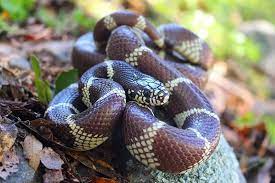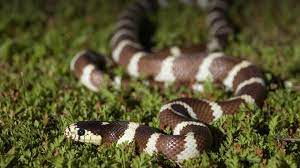The California king snake, scientifically known as Lampropeltis californiae, is a captivating serpent that thrives in the diverse landscapes of the American Southwest. With its striking appearance and fascinating behaviors, this snake has captivated the interest of herpetology enthusiasts and nature lovers alike. Join us as we delve into 19 intriguing facts about the California king snake, shedding light on its unique characteristics and its role within its ecosystem.

1. Mimicry Mastery: The California king snake is known for its exceptional mimicry of the venomous coral snake’s color pattern, offering protection against potential predators.
2. Constrictor Behavior: Like other members of its genus, the California king snake is a constrictor, squeezing its prey until it’s subdued.
3. Versatile Diet: These snakes are skilled hunters, preying on a variety of small vertebrates including rodents, birds, and lizards.
4. Broad Range: The California king snake’s habitat spans from the deserts of California to parts of Nevada, Arizona, and even Mexico.
5. Nocturnal Habits: These snakes are primarily active during the night, using their keen senses to locate prey.
6. Camouflage Capabilities: Their cryptic coloration and intricate patterns allow them to blend seamlessly into their surroundings.
7. Resilient Adaptation: The California king snake’s ability to thrive in various habitats has contributed to its success as a species.
8. Popular Captive Pets: Their attractive appearance and relatively docile nature make them a popular choice among reptile enthusiasts.
9. Lifespan: In the wild, California king snakes can live up to 10-15 years, adapting to their diverse environments.
10. Defensive Tactics: When threatened, these snakes may hiss loudly and shake their tails, mimicking the behavior of rattlesnakes.
11. Role in Ecosystems: As predators, California king snakes help control populations of small rodents, contributing to ecosystem balance.
12. Habitat Conservation: Loss of natural habitat due to urbanization and development poses a threat to these snakes and their ecosystem.
13. Varied Color Phases: California king snakes can display a range of color variations, from black and white banded patterns to vibrant red and white combinations.
14. Unique Rescuer: These snakes are sometimes valued by humans for their ability to control rodent populations around homes and farms.
15. Intraspecific Cannibalism: In rare cases, larger California king snakes have been observed consuming smaller individuals of their own species.
16. Mating Behavior: During mating, male California king snakes perform a ritualistic dance to court females.
17. Egg Layers: Female California king snakes lay eggs, which they carefully protect until they hatch.
18. Natural Enemies: While not venomous, California king snakes may still fall prey to larger predators such as birds of prey.
19. Conservation Efforts: Habitat preservation and awareness campaigns are essential for ensuring the continued survival of these snakes.
Conclusion
The California king snake, with its mimicry abilities and crucial role in ecosystem balance, offers a fascinating glimpse into the intricate world of reptiles. As we explore these 19 intriguing insights, we gain a deeper appreciation for the significance of these serpents within their unique environments.



















Add Comment